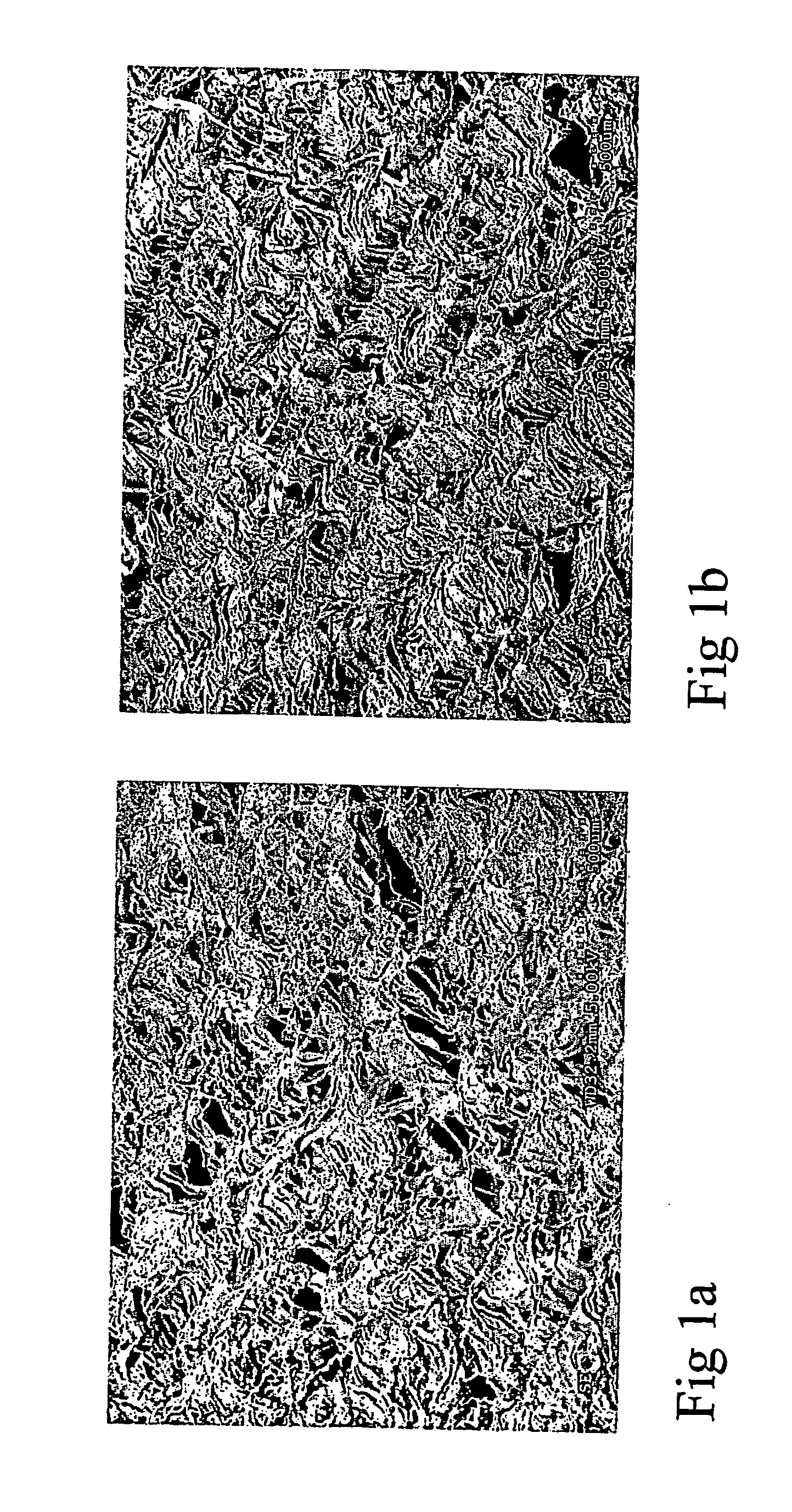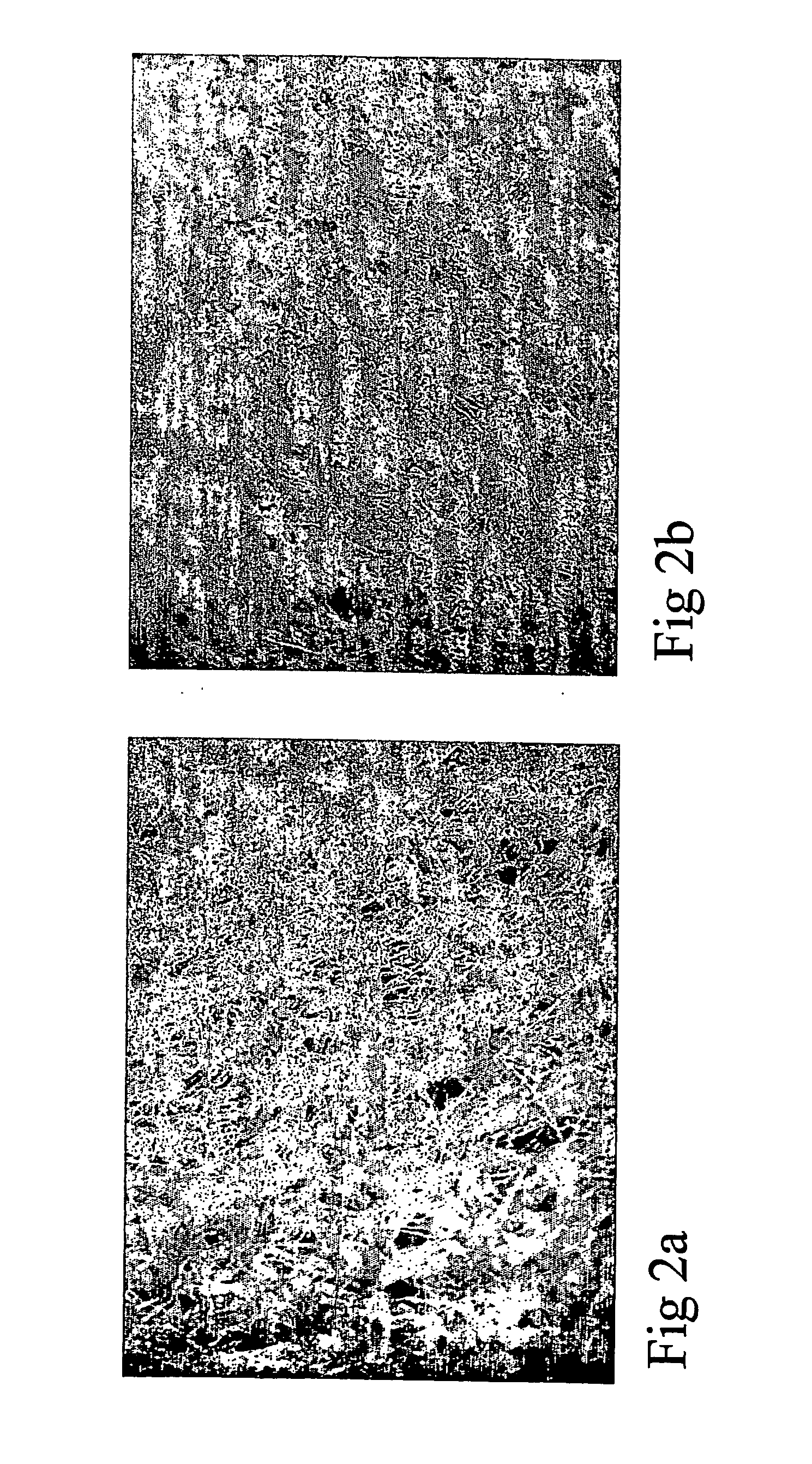Crepe facilitating composition
a crepe and composition technology, applied in the field of tissue product production, can solve the problems of increasing the basis weight (mass per unit area) and other changes of the physical properties of the paper, increasing the amount of paper, and causing the crepe to form rather randomly, so as to improve the distribution of stress and improve flexibility.
- Summary
- Abstract
- Description
- Claims
- Application Information
AI Technical Summary
Benefits of technology
Problems solved by technology
Method used
Image
Examples
example 1
[0105] A dispersion with a dry content of 38% (w / w) of a paraffin wax (water-insoluble, non-surface active thermoplastic material) with a melting point of 55° C. prepared in the presence of cationic starch (water-soluble polymer) to make the paraffin wax particles (average particle size about 1 μm) self-retaining to anionic cellulose fibres, was added at a rate of 2.5 kg / ton (approximately 0.25%) to a machine chest containing a furnish of a mixture of softwood kraft and de-inked fibres. The ratio by weight of paraffin wax to cationic starch was 30:1.
[0106] The furnish was dewatered over a papermaking wire, pressed to a dryness of approximately 42%, and passed to a Yankee cylinder coated with an adhesive of a fully cross-linked polyamidoamine resin.
[0107] The uniformly creped web was removed from the Yankee cylinder using a blade, rolled up into a tissue roll, rewinded from the roll and formed into a final tissue product.
[0108] The dusting during these operations was compared with...
example 2
[0109] A hot melt mixture comprising a thermoplastic paraffin wax and a thermoplastic rosin acid made by distillation of tall oil from Kraft pulping, said mixture having a softening point of 86° C., was dispersed in water in the presence of polyDADMAC (water-soluble polymer). The ratio by weight of paraffin wax and rosin acid to polyDADMAC was 25:1.
[0110] A Malvern particle size analyser was used to determine the average particle size of the particles of the thermoplastic mixture, and the average particle size was found to be about 1 μm.
[0111] The composition of wax, rosin acid and polyDADMAC was added at a rate of 1.8 kg / ton (approximately 0.2%) on dry weight basis to a machine chest containing a furnish of softwood kraft.
[0112] The tissue machine was producing toilet tissue at a rate of 5.5 ton / h.
[0113] The crepe uniformity of the web after creping was determined by microphotographs of tissues produced with and without addition of the composition containing wax, rosin acid and...
example 3
[0115] The dispersion of Example 2 was added at a rate of 4 kg / ton to a machine chest containing a furnish of virgin fibres.
[0116] The furnish was dewatered over a papermaking wire, pressed, and dried on a Yankee cylinder.
[0117] The uniformly creped web was removed from the Yankee cylinder using a blade, rolled up into a tissue roll, rewinded from the roll and formed into a final tissue product.
[0118] The tissue machine was producing toilet tissue (20 g / m2) at a speed of 1500 m / min.
[0119] The crepe uniformity of the web after creping was determined by microphotographs of tissues produced with and without addition of the composition of Example 2. The photographs (FIG. 2) show a considerable improvement in creping uniformity, and thus an increased softness perception, of the tissue paper. FIG. 2a and FIG. 2b, respectively, show the tissue paper produced without and with addition the composition of Example 2.
[0120] Other advantages were reduced dusting, improved machine and conver...
PUM
| Property | Measurement | Unit |
|---|---|---|
| melting point | aaaaa | aaaaa |
| melting point | aaaaa | aaaaa |
| particle size | aaaaa | aaaaa |
Abstract
Description
Claims
Application Information
 Login to View More
Login to View More - R&D
- Intellectual Property
- Life Sciences
- Materials
- Tech Scout
- Unparalleled Data Quality
- Higher Quality Content
- 60% Fewer Hallucinations
Browse by: Latest US Patents, China's latest patents, Technical Efficacy Thesaurus, Application Domain, Technology Topic, Popular Technical Reports.
© 2025 PatSnap. All rights reserved.Legal|Privacy policy|Modern Slavery Act Transparency Statement|Sitemap|About US| Contact US: help@patsnap.com



